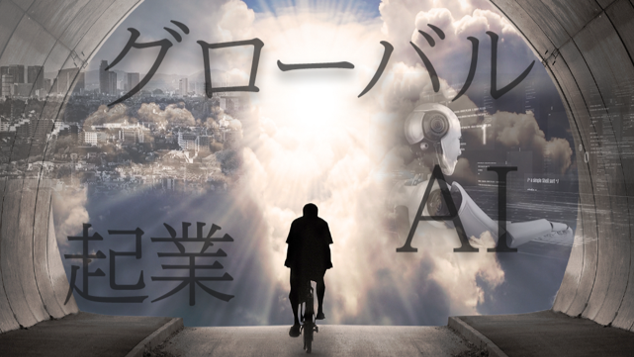The Era of the 100-Year Lifespan

Yesterday (Wednesday, 28th), to accompany the Founder/Chairman & CEO, Takeo Harada, going to a business trip to Osaka, I went to ‘the World Exposition 2025(EXPO 2025)’ held in Yumeshima, the artificial island in Osaka city from 13th April this year. Have you already been there? Since its inception in the UK in the mid-19th century, World Expositions have been held around the world with a variety of themes, and there have been over 170 such expositions, including those registered with the Bureau International des Expositions (BIE) and those recognised as such. The first EXPO in Japan was held in 1970 (Showa 45) at Osaka Senri Kyuryo, and this year’s EXPO is sixth time the EXPO has been held in Japan, as stated below.
[EXPOs in Japan]
- Japan World Exposition Osaka 1970
Held in Osaka Senri Kyuryo in 1970 (Showa 45)
- International Ocean Exposition
Held on the island of Okinawa in 1975 (Showa 50)
- The International Exposition, Tsukuba, Japan, 1985
Held in Tsukuba Science City in 1985 (Showa 60)
- The International Garden and Greenery Exposition, Osaka, Japan 1990
Held in Tsurumi Ryokuchi in 1990 (Heisei 2)
- The 2005 World Exposition, Aichi, Japan
Held in Aichi in 2005 (Heisei 17)
At the five previous EXPOs, ‘EXPO’70’, ‘EXPO’75’, ‘EXPO’85’ and ‘EXPO 2005’, the stock prices significantly increased, and while many countries claim their national interests, the human network was built and economic unification progressed. Would ‘EXPO 2025’ be the opportunity to construct political and economic partnerships between nations, not only the place for international exchanges?
In addition, Japanese people must be questioning whether this EXPO will revitalise the economy in Japan or the region of Osaka, Kansai and strengthen the financial situation of small and mid-sized enterprises. The theme of ‘EXPO 2025’ is ‘Future Society for Our Lives’. When looking at Japan, we wonder whether we are really capable of taking the initiative in engaging in team activities to take action toward the future in order to realise this theme.
For me, I cannot say ‘Yes, we are capable’ with enough confidence.
The spread of mobile phones and the Internet progressed rapidly in the late 1990s, and AI began to attract serious attention from the general public after 2010. Young people who are ‘digital natives,’ a generation for whom the Internet is a given, tend to be uncomfortable with face-to-face communication because they have mainly communicated via email and chat. One-on-one communication using a digital screen is very easy, but when several people get together, people often become stiff and ask questions such as, ‘What should we talk about?’ or ‘We don’t have anything to say.’ No matter how much ‘team activities’ or ‘bond of solidarity’ may be talked about, it’s nothing more than armchair theory, and that’s what I feel when I look at my acquaintances of the same age or younger than me.
The Founder/Chairman & CEO, Takeo Harada, has stated about entrepreneurship.
Last November, in order to progress reskilling and entrepreneurship, he conducted a lecture in the course Introduction to Medical Engineering at the School of Engineering at the University of Tokyo, titled ‘What is entrepreneurship? ~Approach from practical science and theory~’. This lecture takes into account the perspectives of medicine and engineering, while at the same time recognising key points from the perspectives of both practical and theoretical studies. Students do not simply listen to lectures but also discuss ‘applied problems’ with each other. Ultimately, the lecture provides an easy-to-understand explanation of entrepreneurship from the perspective of creating profitable businesses and their stable maintenance and development, with the aim of encouraging students to transition to independent learning. The lecture will start by explaining the concept of ‘entrepreneurship’ itself, which is frequently discussed in Japanese society today, to understand why it is necessary in Japan today, and then learn about causation and effectuation as ‘ways’ of doing entrepreneurship. The participants then learnt about causation and effectuation as ‘methods’ of entrepreneurship, compared the two, and learnt about monetisation, which is the further core of ‘commercialisation’, the key to entrepreneurship, as well as the basics of human resource management and capital policy as elements to ensure the sustainability of businesses, in a workshop-style format through lectures. This lecture will present updated research results from medical researchers within the university, who conduct forefront research and invite researchers outside the university to understand the needs and seeds and acquire the knowledge needed to draw practical plans in the mixed area of medicine and engineering.
I again acknowledged my problem of lack of communication, sharing information and unclear settings of objects by listening to the lecture of Founder/Chairman & CEO, Takeo Harada. Reskilling is important for both young and middle senior generations, regardless of their ages. In the time that needs skills and knowledge updated in this modern society, called the era of the 100-year lifespan, I would like to expand our ability with all members from our membership service ‘Takeo Harada Gemeinschaft’ and students.
We hope that as many people as possible who have been involved with our institute will be able to create new value.
Our institute’s social contribution activities are funded by 50% of the profits generated from membership fees for our membership service “Harada Takeo Gemeinschaft.” We provide training and advice for talent that will bring about brilliant innovation, as well as research, development and dissemination of information literacy.
Thanks to the support of our members, we are able to promote our social contribution activities while operating globally. We would like to express our sincere gratitude.
We hope for your continued guidance and encouragement.
Register for membership here: https://haradatakeo.com/ec/entry/rank/new
Tomomi Otsubo, Chancellery Unit



